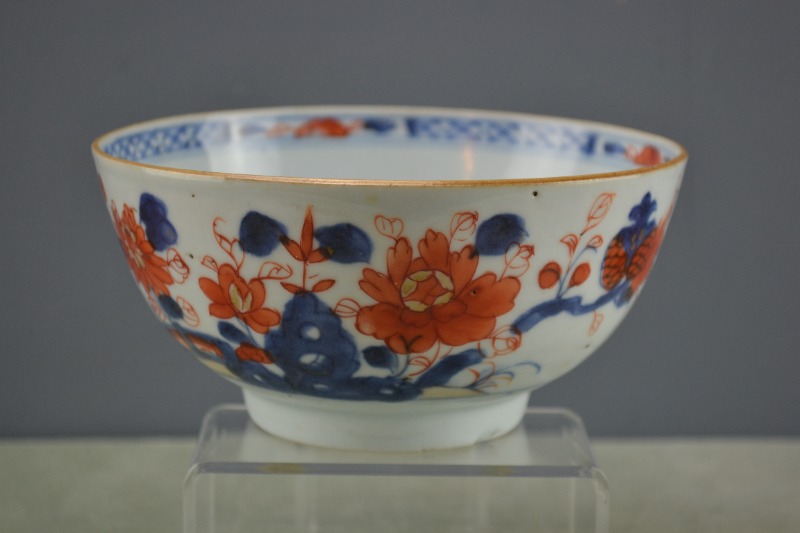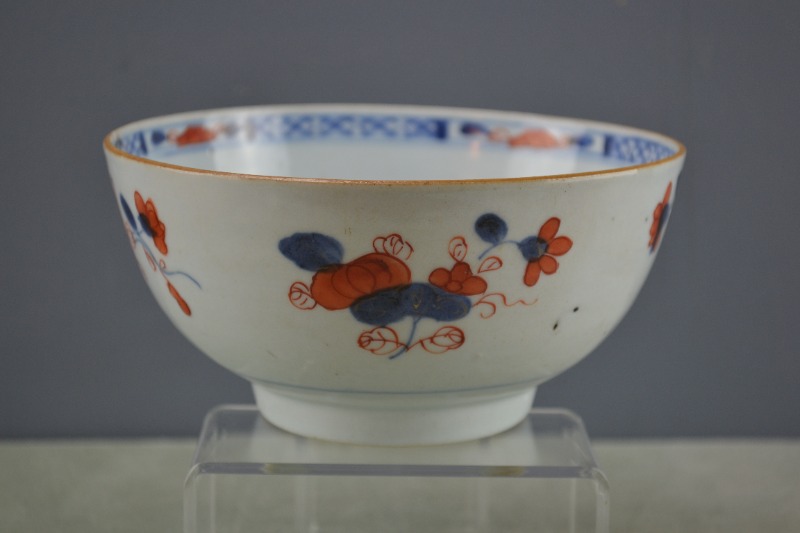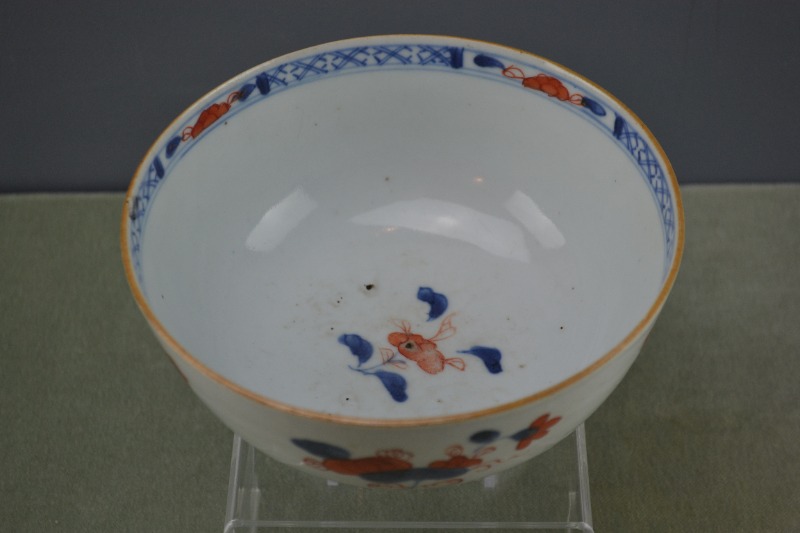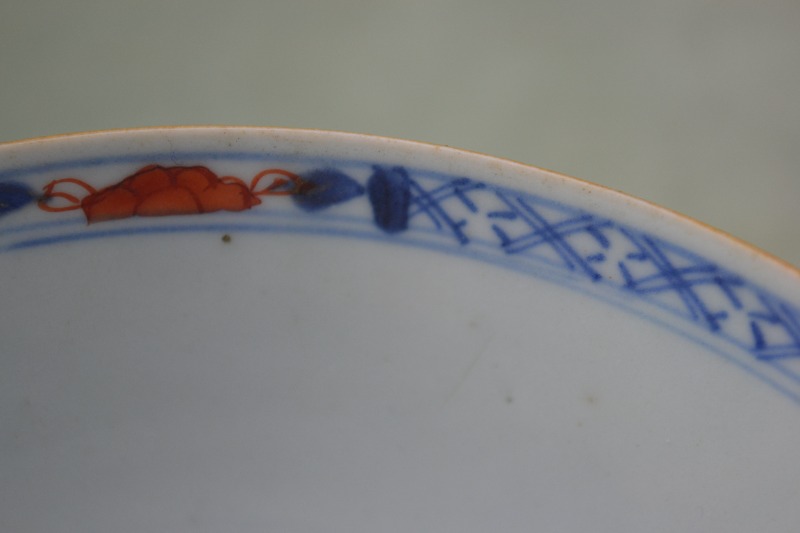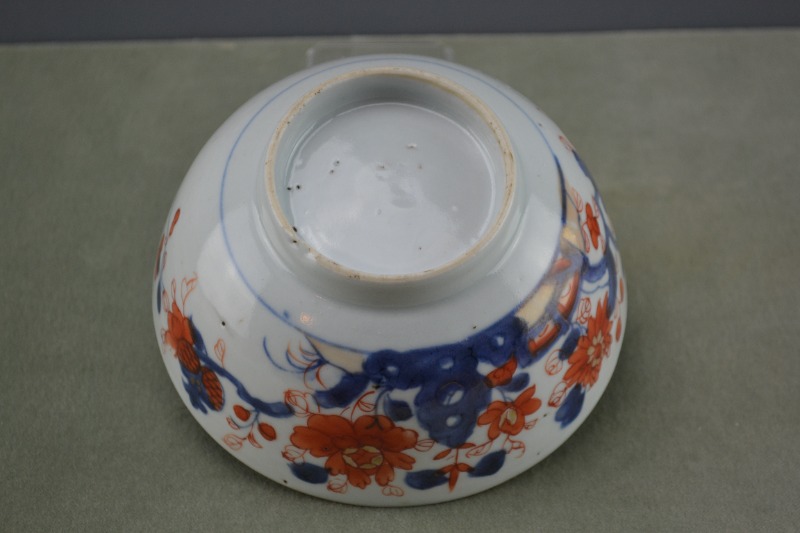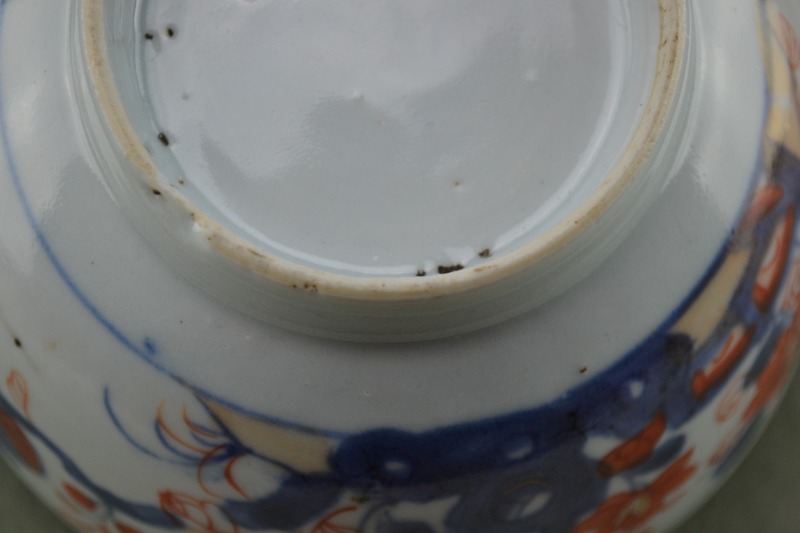Chinese Imari Slop Bowl, Yongzheng Period, 1723-1735
Age:
Yongzheng Period, 1723-1735
Material:
Porcelain
Dimensions:
Diameter 14.5cm
Height 7 cm
Height 7 cm
Shipping:
Standard Parcel
Price:
SOLD
A Chinese export bowl with rock and lingzhi in underglaze blue, with peonies, chrysanthemums and lychee in overglaze iron red and gold. A diaper pattern runs around the inside edge. The rim is dressed in brown to prevent fritting. As is common with Chinese export porcelain, there is no mark.
In good condition with firing imperfections. There is a tiny chip out of the inside edge of the foot (the indent on the outside edge is pre-glazing) and a second on the inside edge of the bowl. There are no cracks.
During the turmoil of the ‘transitional’ period by the end of the Ming dynasty to the beginning of the Qing, China lost most of the porcelain trade to the Japanese. The Japanese style, named after the port of Imari, proved hugely popular in Europe. When political conditions stabilized in China, the Dutch traders sought similar products from the Chinese. Chinese Imari was produced during the first half of the 1700s. Slop bowls were a standard part of the early tea sets. They were used to empty the cold tea leaves in tea cups before refilling with hot tea.

